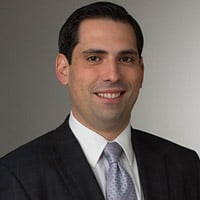 In this series, our sister site ThinkAdvisor offers two distinct perspectives on the same topic — one from an academic, the other from a practicing financial advisor. (Check out the previous column here.) QUESTION: How do you plan for health care expenses in retirement?
In this series, our sister site ThinkAdvisor offers two distinct perspectives on the same topic — one from an academic, the other from a practicing financial advisor. (Check out the previous column here.) QUESTION: How do you plan for health care expenses in retirement? THE ADVISOR — JOE ELSASSER, CFP, PRESIDENT, COVISUM:
- Medicare Part B premiums: Most people pay a base premium of $134 per month for Medicare Part B doctors and outpatient coverages. Some people with lower Social Security benefits pay less, due to the “hold harmless” provision that prevents the take-home amount of a Social Security check from being reduced due to an annual increase in the Medicare Part B premium.
- Medicare Part B premiums surcharges: Some people pay more for Part B. The higher your modified adjusted gross income (MAGI) is, which in this case is equal to your adjusted gross income, plus nontaxable interest income, the higher your premium will be. For a couple with income over $320,000 in 2016, the surcharge will be $294.60 per month. In other words, a married couple with MAGI over $320,000 would pay over $10,000 for Part B costs in total, including the base premium plus the surcharge.
- Medicare Part D premiums and surcharges: Medicare drug plans carry a premium and also have surcharges based on income. The lowest premiums for 2018 are in the $15 per month range and, depending on the client needs, coverage can be as high as $200 per month. For people with incomes over $320,000 for a couple or $160,000 for an individual, the surcharge would be an extra $74.80 per month per person on top of the base plan cost.
THE QUANT — RON PICCININI, PH.D., DIRECTOR OF PRODUCT DEVELOPMENT, COVISUM:
Ipsa senectus morbus est., th 1 th 2 3 4 1 Does Staying Healthy Reduce Your Lifetime Health Care Costs? pg 2-3, May 2010. 2 A Reality Check on Health Care Costs for Early Retirees. June 2014. 3 Health Care Costs for Retirees Rise to an Estimated $275,000 Fidelity Analysis Shows. August 2017. 4 Survey of Consumer Finances. 2016. Joe Elsasser, CFP, RHU, REBC developed Social Security Timing software for advisors in 2010. Through Covisum, Joe introduced Tax Clarity in 2016. Based in Omaha, Nebraska, Joe co-authored “Social Security Essentials: Smart Ways to Help Boost Your Retirement Income.”
Joe Elsasser, CFP, RHU, REBC developed Social Security Timing software for advisors in 2010. Through Covisum, Joe introduced Tax Clarity in 2016. Based in Omaha, Nebraska, Joe co-authored “Social Security Essentials: Smart Ways to Help Boost Your Retirement Income.”  Renaud “Ron” Piccinini, Ph.D., came from France to America, finally settling in Omaha, Nebraska. He brings extensive experience in building world-class risk systems, supporting tens of billions of dollars in assets to Covisum. Previously, Ron co-founded PrairieSmarts, a software business. Ron wrote his dissertation on what are now known as “Black Swan Events.”
Renaud “Ron” Piccinini, Ph.D., came from France to America, finally settling in Omaha, Nebraska. He brings extensive experience in building world-class risk systems, supporting tens of billions of dollars in assets to Covisum. Previously, Ron co-founded PrairieSmarts, a software business. Ron wrote his dissertation on what are now known as “Black Swan Events.”© 2025 ALM Global, LLC, All Rights Reserved. Request academic re-use from www.copyright.com. All other uses, submit a request to [email protected]. For more information visit Asset & Logo Licensing.







